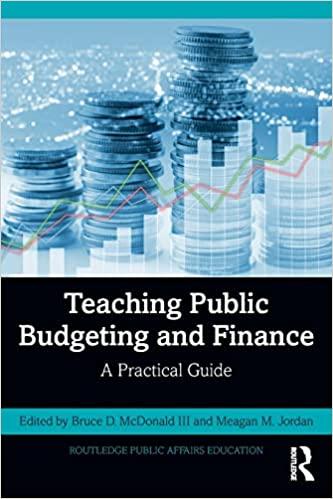Answered step by step
Verified Expert Solution
Question
1 Approved Answer
Question 11.15 A., B , C and D. Question 11.15 A, B C and D 11.14. A 150,000-SF office building has a triple-net lease providing

Question 11.15 A., B , C and D.
Question 11.15 A, B C and D 11.14. A 150,000-SF office building has a triple-net lease providing a constant rent of $20/SF per year. (With a triple-net lease, you can assume the rent equals the net operating cash flow.) The lease has five years before it expires (.e. assume the next payment comes in one year, and there are four more annual payments after that under the pres ent lease). Rents on similar leases being signed today are $22/SF. You expect rents on new leases to grow at 2.5 percent per year for existing buildings. You expect to release the building in year 6 after the current lease expires, but only after experiencing an expected vacancy of six months, and after spending S10/SF in tenant improvements (Tis). After 10 years, you expect to sell the building at a price equal to 10 times the then-prevailing rent in new triple-net leases. Based on survey information about typical going-in TRRs prevailing currently in the market for this type of property, you think the market would require a 12 percent expected return for this building, 254 PART IV REAL ESTATE VALUATION AND INVESTMENT ANALYSIS AT THE MICRO-LEVEL c. What a. What is the NPV of an investment in this property if the price is $30 milli Should you do the deal? b. What will be the IRR at that price? he cap rate at the $30 million price? 11.15. Consider the building described in Question 11.14. Suppose everything is the same except that, since the time the current lease was signed, the market for office space has softened. Rents on new leases are lower now and will be only $18/SF next yo instead of the $20/SF that prevailed when the current lease was signed. Further more, suppose that the current lease has only one more year until it expires, instead of five. You expect to release in year 2, and again in year 7. with six months vacancy and Slo/SF in capital expenditures each time, as before. You still expect growth of 2.5 percent per year in new-lease rental rates, starting from the expected year-I love of $18. a. What is the value of the property under the required return assumption Question 11.147 b. What would be the NPV of the deal from the buyer's perspective if the owner wants to sell the building at a cap rate of 10 percent based on the existing leaset c. What would be the cap rate for this building at the zero-NPV price? d. Why is the market value cap rate so ent in this case than in the case presented in Question 11.147. Show transcribed image text Question 11.15 A, B C and D 11.14. A 150,000-SF office building has a triple-net lease providing a constant rent of $20/SF per year. (With a triple-net lease, you can assume the rent equals the net operating cash flow.) The lease has five years before it expires (.e. assume the next payment comes in one year, and there are four more annual payments after that under the pres ent lease). Rents on similar leases being signed today are $22/SF. You expect rents on new leases to grow at 2.5 percent per year for existing buildings. You expect to release the building in year 6 after the current lease expires, but only after experiencing an expected vacancy of six months, and after spending S10/SF in tenant improvements (Tis). After 10 years, you expect to sell the building at a price equal to 10 times the then-prevailing rent in new triple-net leases. Based on survey information about typical going-in TRRs prevailing currently in the market for this type of property, you think the market would require a 12 percent expected return for this building, 254 PART IV REAL ESTATE VALUATION AND INVESTMENT ANALYSIS AT THE MICRO-LEVEL c. What a. What is the NPV of an investment in this property if the price is $30 milli Should you do the deal? b. What will be the IRR at that price? he cap rate at the $30 million price? 11.15. Consider the building described in Question 11.14. Suppose everything is the same except that, since the time the current lease was signed, the market for office space has softened. Rents on new leases are lower now and will be only $18/SF next yo instead of the $20/SF that prevailed when the current lease was signed. Further more, suppose that the current lease has only one more year until it expires, instead of five. You expect to release in year 2, and again in year 7. with six months vacancy and Slo/SF in capital expenditures each time, as before. You still expect growth of 2.5 percent per year in new-lease rental rates, starting from the expected year-I love of $18. a. What is the value of the property under the required return assumption Question 11.147 b. What would be the NPV of the deal from the buyer's perspective if the owner wants to sell the building at a cap rate of 10 percent based on the existing leaset c. What would be the cap rate for this building at the zero-NPV price? d. Why is the market value cap rate so ent in this case than in the case presented in Question 11.147. Show transcribed image textStep by Step Solution
There are 3 Steps involved in it
Step: 1

Get Instant Access to Expert-Tailored Solutions
See step-by-step solutions with expert insights and AI powered tools for academic success
Step: 2

Step: 3

Ace Your Homework with AI
Get the answers you need in no time with our AI-driven, step-by-step assistance
Get Started


